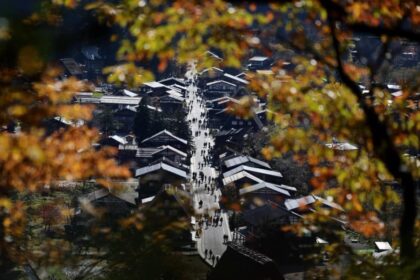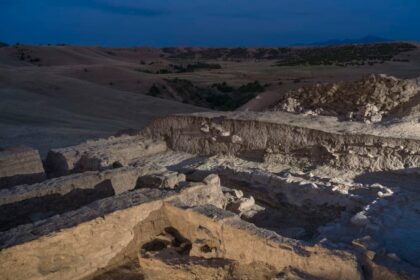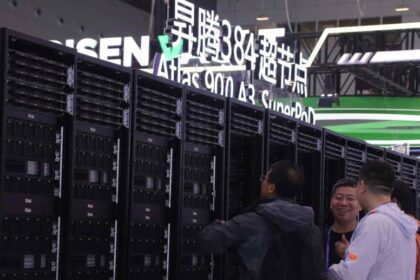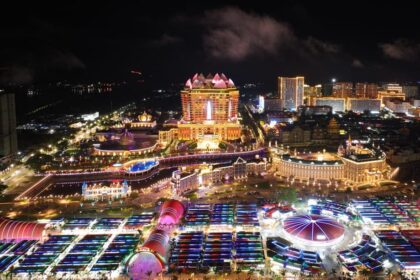Why the Marines are focusing on Yonaguni now
In recent weeks, the U.S. Marine Corps has quietly moved equipment, fuel, and field gear across the East China Sea to tiny Yonaguni Island, Japan’s westernmost inhabited outpost. Just 70 miles from Taiwan, Yonaguni sits on the razor’s edge of a tense military balance in the western Pacific. Barge deliveries through Kubura Port, a new aviation refueling site established during a bilateral drill, and an uptick in medical and disaster response caches point to a practical aim. Marines are testing how fast they can stage and sustain a small, dispersed presence on key terrain inside the first island chain, the arc of land that hems in the Chinese coast.
- Why the Marines are focusing on Yonaguni now
- A tiny island at the edge of the first island chain
- What the Marines have moved and built
- Exercises are stress testing the concept
- Japan is hardening the southwest islands
- What an outpost on Yonaguni could do during a crisis
- Growing Chinese activity around Yonaguni
- Humanitarian missions and local concerns
- What to watch next
- Highlights
The proof-of-concept runs have been deliberate. In mid September, Marines offloaded eighteen 20 foot ISO containers, two water SIXCON modules, and a 40 foot refrigerated unit, then shipped them onward to Japan’s Camp Yonaguni before returning the empties to Naha Military Port by September 19. A trial of an autonomous low profile vessel was shelved after planning changes, but a second ferry mission, focused on humanitarian assistance and disaster response gear, completed on November 18. Meanwhile, Japanese fighter jets scrambled after a Chinese drone flew near Yonaguni, a reminder of the contested air and sea lanes that surround the island.
Marines underscore the humanitarian use of prepositioned supplies, a theme echoed across the Philippines and other regional sites. Even so, the operational logic is plain. A foothold on Yonaguni, even a small one, could speed fuel and medical support to U.S. and Japanese forces, enable short notice aviation operations, and complicate Chinese planning by adding resilient aimpoints that are hard to suppress. The island’s existing port, runway, and Japanese military presence make it an attractive node for an agile logistics network designed to operate under pressure.
A tiny island at the edge of the first island chain
Yonaguni is a rugged island of about 11 square miles and roughly 1,500 to 1,700 residents in Japan’s Yaeyama island group. It sits just east of Taiwan’s coast and lies along routes often used by Chinese military aircraft and ships moving between the East China Sea and the Philippine Sea. Japan has already placed a radar site and electronic warfare unit on the island, and it treats Yonaguni as a listening and observation post for nearby seas that can turn crowded with foreign activity.
What is the first island chain
The first island chain is a strategic concept that describes the string of archipelagos stretching from Japan south through Taiwan and the Philippines to Borneo. Control of air and sea access through this line matters to both Beijing and Washington. For China, breaking through the chain offers freedom of maneuver for the People’s Liberation Army Navy and Air Force into the Pacific. For the United States and its allies, the chain provides observation points, launch pads for surveillance and defense, and a lattice of locations where small forces can disperse and persist under threat.
Why the Bashi Channel matters
To Yonaguni’s south lies the Bashi Channel, the deep water gap between Taiwan’s Orchid Island and the Philippines’ Mavulis Island. It is a vital maritime and undersea chokepoint. Submarines, surface ships, and military aircraft use it as a gateway between the South China Sea and the Philippine Sea. Analysts argue that, together with Japanese islands to the north, Philippine positions closer to Bashi could form a mutually reinforcing network that monitors transit routes and deters attempts to isolate Taiwan.
What the Marines have moved and built
Marine logisticians began with the basics, showing they can get containers, fuel, and climate controlled storage ashore at a small port and onward to a Japanese base. During the September evolution, Marines moved standard 20 foot containers, water purification and storage modules, and a large refrigerator unit. The November mission used a contracted barge to ferry humanitarian and disaster response supplies. These are the building blocks of sustained operations, and they also have dual use value when storms or earthquakes strike.
An expeditionary refueling hub on the island
During a bilateral exercise with Japan, Marines from 1st Marine Aircraft Wing established a forward arming and refueling point on Yonaguni for the first time. A forward refueling point is a temporary site, set up quickly, that allows helicopters and short landing capable aircraft to take on fuel and, if authorized, ammunition closer to where they are needed. Marine KC 130J tanker transports flew the gear in from Okinawa. Once running, the site refueled CH 53E heavy lift helicopters. In a real emergency, a refueling footprint on Yonaguni could support a ferry route that moves troops, medics, and critical supplies toward Taiwan. Marines also note that Yonaguni’s runway could serve as a divert location for F 35B jets that can use short takeoff and vertical landing modes. That kind of flexibility raises the number of viable operating sites available to allied aircraft if major air bases come under missile attack.
Marines had planned to test a low profile autonomous vessel at Kubura Port during Resolute Dragon 2025, but that trial was canceled after adjustments to exercise activities. The logistics barge runs and FARP deployment still hit the core objectives. They showed that an austere island can accept fuel, supplies, and aviation support on short notice without permanent American infrastructure.
Exercises are stress testing the concept
Yonaguni has become a recurring venue in U.S. Japan training. During Resolute Dragon 24, the 12th Marine Littoral Regiment deployed a TPS 80 radar to the island for the first time. Japan’s Air Self Defense Force flew the radar in by C 2 transport aircraft. The system provides air and ground surveillance and helps knit together a common picture across air, land, and sea domains, a critical function when aircraft and drones pass through narrow waterways and skies.
In a separate drill series, Keen Sword, U.S. and Japanese forces rehearsed noncombatant evacuation at Camp Yonaguni using MV 22 Osprey aircraft. The training scenario focused on moving residents and tourists to safety if tensions spike. In an official statement describing Keen Sword, United States Forces Japan said the exercise sought
to demonstrate to the world our will to defend Japan and the ironclad nature of the U.S. Japan alliance, which has stood for more than 70 years.
Together, these events point to a blend of missions. Marines are proving out a logistics and sensing presence, and both allies are practicing how to protect civilians in a crisis that could unfold quickly.
Japan is hardening the southwest islands
Tokyo has invested steadily across its Nansei island chain, which includes Yonaguni, Ishigaki, Miyako, and other islands ringing Taiwan’s east. The government has expanded radar coverage, deployed electronic warfare teams, and moved to place surface to surface missiles and air defenses in the region. Japan announced deployments of Patriot PAC 3 air defense systems to several islands, including Yonaguni, and has repeatedly scrambled fighters to intercept drones and surveillance aircraft passing through nearby airspace. Defense officials have also moved to strengthen logistics by adding dedicated transport ships for the Ground Self Defense Force so that isolated garrisons can be resupplied even if larger naval assets are tied down elsewhere.
Japan’s strategic posture is changing in tandem with a closer operational partnership with the United States. Leaders in Tokyo and Washington agreed this year to upgrade the command structure of U.S. forces in Japan, improving peacetime coordination and crisis decision making. Satoru Mori, a professor at Keio University who has studied allied roles, described how responsibilities are evolving. He noted that Japan’s growing capabilities could free American units in Japan to focus more on supporting Taiwan’s defense if needed.
I think Japan is gradually assuming the offensive operations to defend Japan itself. And that would actually allow and free up U.S. forces that have been previously assigned to defend Japan, to concentrate on the defense of Taiwan.
The net effect is a denser, more resilient allied posture along the island arc closest to Taiwan.
What an outpost on Yonaguni could do during a crisis
Marines have redesigned their Pacific units to operate in small, mobile teams that can hide in plain sight, shoot when needed, and move before being targeted. The concept is sometimes called expeditionary advanced base operations. In practice, it means setting up temporary sites that provide sensing, communications, air defense, refueling, and precision strike support without the footprint of a large base. Locations like Yonaguni offer a ready made airstrip and pier, which shortens timelines to get a site running.
In a Taiwan scenario, a Yonaguni FARP could complete the refueling leg for helicopters and tiltrotor aircraft carrying medics, repair teams, or small contingents of reinforcements. The runway could be used as a divert option for F 35B fighters if weather or combat damage affects other fields. Marine Littoral Regiments are designed to field long range fires such as HIMARS launchers and Naval Strike Missile systems like NMESIS. If cleared by political authorities and supported by reliable sensing, such weapons could complicate Chinese naval movements moving east of Taiwan. The same site could receive casualties, surge generators, and humanitarian supplies if fighting triggers a refugee wave or infrastructure damage.
Any enduring presence on Yonaguni would likely remain small and austere. Dispersed sites are meant to be survivable through mobility, concealment, deception, and rapid reconstitution, not through heavy fortification. That logic fits an island where space is limited and local communities continue normal life alongside defense facilities.
Growing Chinese activity around Yonaguni
Chinese ships and aircraft frequently move through waters and airspace near Japan’s southwest islands. During the summer, a Chinese Y 9 intelligence aircraft and two presumed Chinese unmanned aerial vehicles transited near Yonaguni, prompting Japanese fighter scrambles. Japan’s Defense Ministry confirmed more recent drone flights near the island, which increased local concern. The People’s Liberation Army Navy also uses nearby straits as it shifts forces around Taiwan to signal that it can pressure or even blockade the island.
Japan learned in 2022 how quickly cross strait tensions can spill outward. Chinese missile tests after a senior U.S. visit to Taipei put several ballistic missiles into Japan’s exclusive economic zone, with one splashdown roughly 80 kilometers from Yonaguni. The episode reinforced Tokyo’s drive to improve air and missile defenses and to build reliable logistics to its far islands.
Humanitarian missions and local concerns
Exercises on Yonaguni do not focus solely on combat tasks. Evacuation drills, medical aid training, and disaster response planning all feature in regular events. Scholars warn that any Taiwan conflict could send refugees toward Japan’s nearby islands. Fumiko Sasaki, who teaches East Asian security at Columbia University, has studied that scenario. She pointed to Yonaguni’s proximity and role as a first stop for people seeking safety.
We expect that many refugees would come to Japan, and perhaps some ships from Taiwan. And perhaps Yonaguni would be the first place where many refugees, including Japanese people, arrive.
Local voices are split on the strategic build up. Some residents value the security and economic activity the garrisons bring. Others fear that military infrastructure could make the island a target and worry about evacuation plans if tensions escalate. Fishermen in the region have long complained about harassment near the disputed Senkaku Islands. Kokichi Irabu, managing director of the Yaeyama Fisheries Cooperative, described the blend of resolve and anxiety felt across the island communities.
Our nation should be protected by us,
he said, while also acknowledging the risks of living so close to a potential flashpoint.
What to watch next
The recent cargo runs and the first time refueling site show what is feasible on Yonaguni without a permanent American base. Several indicators will reveal whether a more durable Marine presence is coming. Recurrent barge deliveries that leave larger equipment behind would suggest steady prepositioning. Expanded Japanese work on the port and runway, especially to support short takeoff aircraft, would enable more frequent allied operations. Public confirmation that Marines are rotating small teams to the island for longer periods would signal a move from concept to routine posture. Coordination with Philippine sites near the Bashi Channel would point to a wider allied network of chokepoints and refueling nodes. The most important piece remains political. Any crisis use of Yonaguni by American forces depends on decisions in Tokyo under the U.S. Japan security treaty and on crisis conditions around Taiwan.
Highlights
- U.S. Marines have run multiple barge missions to Yonaguni Island, 70 miles from Taiwan, moving containers, water modules, and refrigerated storage in September and November.
- A forward arming and refueling point was established on Yonaguni for the first time during a bilateral exercise, with KC 130J tankers supporting refueling of CH 53E helicopters.
- Marines say prepositioned supplies support humanitarian and disaster response, while the same logistics can enable fast military operations in a crisis.
- During Resolute Dragon 24, Marines deployed a TPS 80 radar to Yonaguni by Japanese C 2 transport, enhancing joint surveillance in the area.
- Japanese jets scrambled after a Chinese drone flew near Yonaguni, reflecting frequent Chinese activity in adjacent air and sea lanes.
- Japan has added radar, electronic warfare units, and air defense systems across its southwest islands and is strengthening logistics to remote garrisons.
- A small, austere Marine presence on Yonaguni could assist refueling for aircraft, provide a divert option for F 35B jets, and support area denial if authorized.
- Analysts highlight the Bashi Channel south of Yonaguni as a critical chokepoint that, together with allied positions, can complicate Chinese operations.
- Evacuation drills on Yonaguni reflect concern that a Taiwan conflict could push refugees toward Japan’s nearest islands.
- Local residents see both economic benefits and security risks as military training and infrastructure expand on the island.












